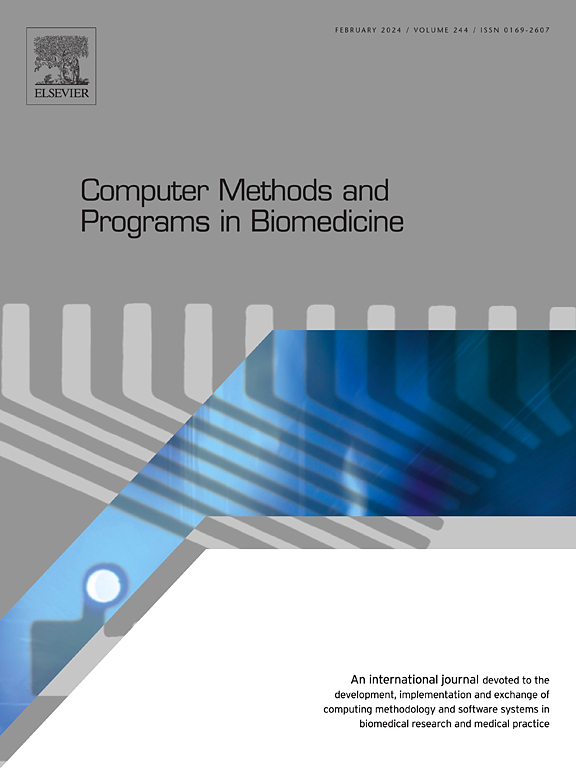头颈部癌症放射组学的预后能力:荟萃分析的启示
IF 4.9
2区 医学
Q1 COMPUTER SCIENCE, INTERDISCIPLINARY APPLICATIONS
引用次数: 0
摘要
本文章由计算机程序翻译,如有差异,请以英文原文为准。
Prognostic power of radiomics in head and neck cancers: Insights from a meta-analysis
Background
Prognostic modeling in head and neck cancers (HNC) has advanced with the integration of clinical factors and radiomic data from CT and MRI scans. However, previous reviews have not systematically evaluated the predictive performance of these models across different oncological endpoints or assessed factors affecting their generalizability. This study aims to fill this gap by providing a comprehensive analysis of prognostic models in HNC.
Methods
Our systematic review and meta-analysis sourced data from PubMed, Embase, and Web of Science until August 30, 2023, shortlisting 16 studies. We concentrated on studies detailing HNC prognosis prediction through radiomics, which transparently tabulated performance metrics of c-index and utilized external validation sets. We excluded studies employing imaging techniques other than CT or MRI. Study quality was assessed using the QUIPS and RQS tools. Our meta-analysis comprised the radiomics prognosis model on all validation datasets, overall survival prediction with radiomics on all validation datasets, and overall survival prediction integrating clinical and radiomics data on external validation sets. All assessments adopted a random effects model. The research has been registered under CRD42023459049.
Results
When evaluating by distinct endpoints, marked differences were observed. Delving deeper into the complexities of overall survival prediction, variables such as incorporation of clinical features and an enlarged training set were identified as major enhancers of the model's performance. Evaluating exclusively on external validation cohorts, purely clinical models demonstrated a prognostic strength of pooled 0.69 c-index for overall survival, in contrast to the 0.68 pooled c-index achieved by models rooted in radiomics. Combining both approaches elevated the pooled c-index to 0.76. It was clear that a blend of an expanded training dataset and features selected, coupled with the diversity in CT and MRI equipment and model counts, are pivotal in fortifying the model's resilience.
Conclusion
This systematic review and meta-analysis demonstrate that combining clinical and radiomic features significantly improves the predictive performance of prognostic models for overall survival in HNC. By systematically evaluating various endpoints and identifying key factors influencing model generalizability, our study fills a critical gap in the literature. These findings provide valuable insights for developing more accurate and personalized prognostic tools in HNC, guiding future research and enhancing clinical decision-making.
求助全文
通过发布文献求助,成功后即可免费获取论文全文。
去求助
来源期刊

Computer methods and programs in biomedicine
工程技术-工程:生物医学
CiteScore
12.30
自引率
6.60%
发文量
601
审稿时长
135 days
期刊介绍:
To encourage the development of formal computing methods, and their application in biomedical research and medical practice, by illustration of fundamental principles in biomedical informatics research; to stimulate basic research into application software design; to report the state of research of biomedical information processing projects; to report new computer methodologies applied in biomedical areas; the eventual distribution of demonstrable software to avoid duplication of effort; to provide a forum for discussion and improvement of existing software; to optimize contact between national organizations and regional user groups by promoting an international exchange of information on formal methods, standards and software in biomedicine.
Computer Methods and Programs in Biomedicine covers computing methodology and software systems derived from computing science for implementation in all aspects of biomedical research and medical practice. It is designed to serve: biochemists; biologists; geneticists; immunologists; neuroscientists; pharmacologists; toxicologists; clinicians; epidemiologists; psychiatrists; psychologists; cardiologists; chemists; (radio)physicists; computer scientists; programmers and systems analysts; biomedical, clinical, electrical and other engineers; teachers of medical informatics and users of educational software.
 求助内容:
求助内容: 应助结果提醒方式:
应助结果提醒方式:


